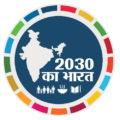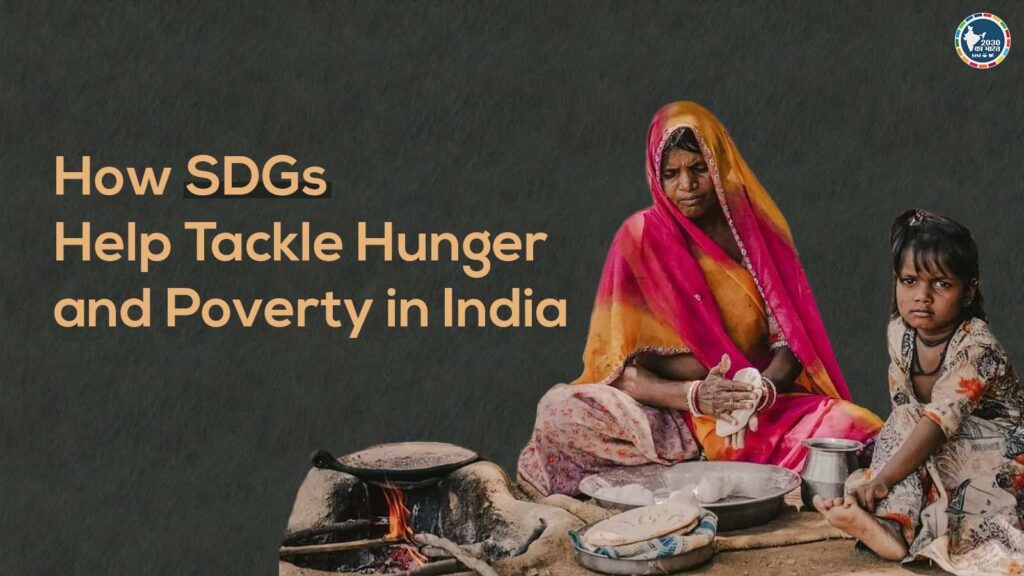Hunger and poverty are two of the most pressing challenges faced by India today. With a population of over 1.4 billion, ensuring that every citizen has access to basic needs is a monumental task. The Sustainable Development Goals (SDGs) introduced by the United Nations in 2015 provide a global framework to address these challenges. For India, achieving SDG 1 (No Poverty) and SDG 2 (Zero Hunger) is crucial not only for national progress but also for the success of the SDGs globally.
At 2030kabharat, we are dedicated to turning these goals into reality by focusing on grassroots initiatives, community empowerment, and sustainable development practices. Let’s explore how SDGs aim to tackle hunger and poverty in India and the role we play in achieving these ambitious targets.
Understanding SDG 1: No Poverty
SDG 1 aims to eradicate extreme poverty for all people everywhere. In the Indian context:
- Financial Inclusion: Initiatives like the Pradhan Mantri Jan Dhan Yojana (PMJDY) ensure every citizen has access to banking services.
- Skill Development: Programs like Skill India equip individuals with employable skills, fostering financial independence.
- Social Security: Schemes such as the Mahatma Gandhi National Rural Employment Guarantee Act (MGNREGA) provide rural employment opportunities.
At 2030काभारत, we focus on empowering underprivileged communities through skill-based training and creating sustainable livelihood opportunities, helping individuals rise above the poverty line.
Understanding SDG 2: Zero Hunger
SDG 2 aims to end hunger, achieve food security, and promote sustainable agriculture. Key initiatives in India include:
- Food Subsidy Programs: The National Food Security Act (NFSA) provides subsidized food grains to over 75% of rural and 50% of urban households.
- Nutritional Support: The Integrated Child Development Scheme (ICDS) focuses on improving maternal and child nutrition.
- Sustainable Agriculture: The National Mission for Sustainable Agriculture (NMSA) promotes eco-friendly farming practices.
We at 2030काभारत have partnered with organizations to distribute nutritious meals to children in rural areas and promote sustainable farming methods to improve agricultural productivity.
Challenges in Achieving SDG 1 and SDG 2 in India
Despite significant progress, several challenges hinder the complete eradication of hunger and poverty:
- Economic Disparities: Urban-rural income gaps continue to widen, leaving rural populations more vulnerable.
- Resource Distribution: Inefficient supply chains lead to food wastage while millions go hungry.
- Digital Divide: Limited access to digital tools in rural areas affects financial inclusion and awareness of government schemes.
Addressing these challenges requires a collaborative approach, involving government policies, private sector participation, and community-driven initiatives.
How 2030kabharat Contributes to SDG Goals
At 2030kabharat, we are actively working to bridge the gaps and accelerate progress toward SDG 1 and SDG 2:
- Skill Development Programs: We conduct workshops to train individuals in vocational skills, enabling them to secure sustainable jobs.
- Nutritional Campaigns: Our campaigns focus on raising awareness about balanced diets and distributing nutritious meals in underprivileged areas.
- Digital Literacy: By introducing digital tools to rural communities, we empower individuals to access financial services and government schemes.
Success Stories: Impact of SDG Initiatives
- Digital Banking in Rural India: Under PMJDY, over 47 crore bank accounts have been opened, providing financial security to millions.
- Mid-Day Meal Program: This initiative has significantly reduced malnutrition and increased school attendance among children.
- Sustainable Farming: Farmers adopting eco-friendly techniques under NMSA have reported increased yields and reduced costs.
Why SDGs Matter for India’s Future
India’s success in achieving SDG Goals is pivotal for global progress. With over 65% of the population living in rural areas, targeted interventions can drive substantial change. Programs focusing on clean water and sanitation (SDG 6), gender equality (SDG 5), and decent work and economic growth (SDG 8) further contribute to tackling hunger and poverty.
At 2030kabharat, our vision aligns with these global goals, emphasizing inclusive growth and sustainable development. Together, we can build a stronger, equitable, and hunger-free India.
How You Can Support the Mission
- Volunteer: Join hands with us in our community outreach programs.
- Donate: Your contributions can directly impact lives by funding skill development and nutritional campaigns.
- Spread Awareness: Share our mission on social media to encourage more people to join the cause.
A Shared Commitment to End Hunger and Poverty
The journey to achieve Sustainable Development Goals is challenging but not impossible. By addressing the root causes of hunger and poverty through innovation, collaboration, and determination, India can pave the way for a brighter future.
Let’s work together with 2030kabharat to ensure that no one is left behind.

